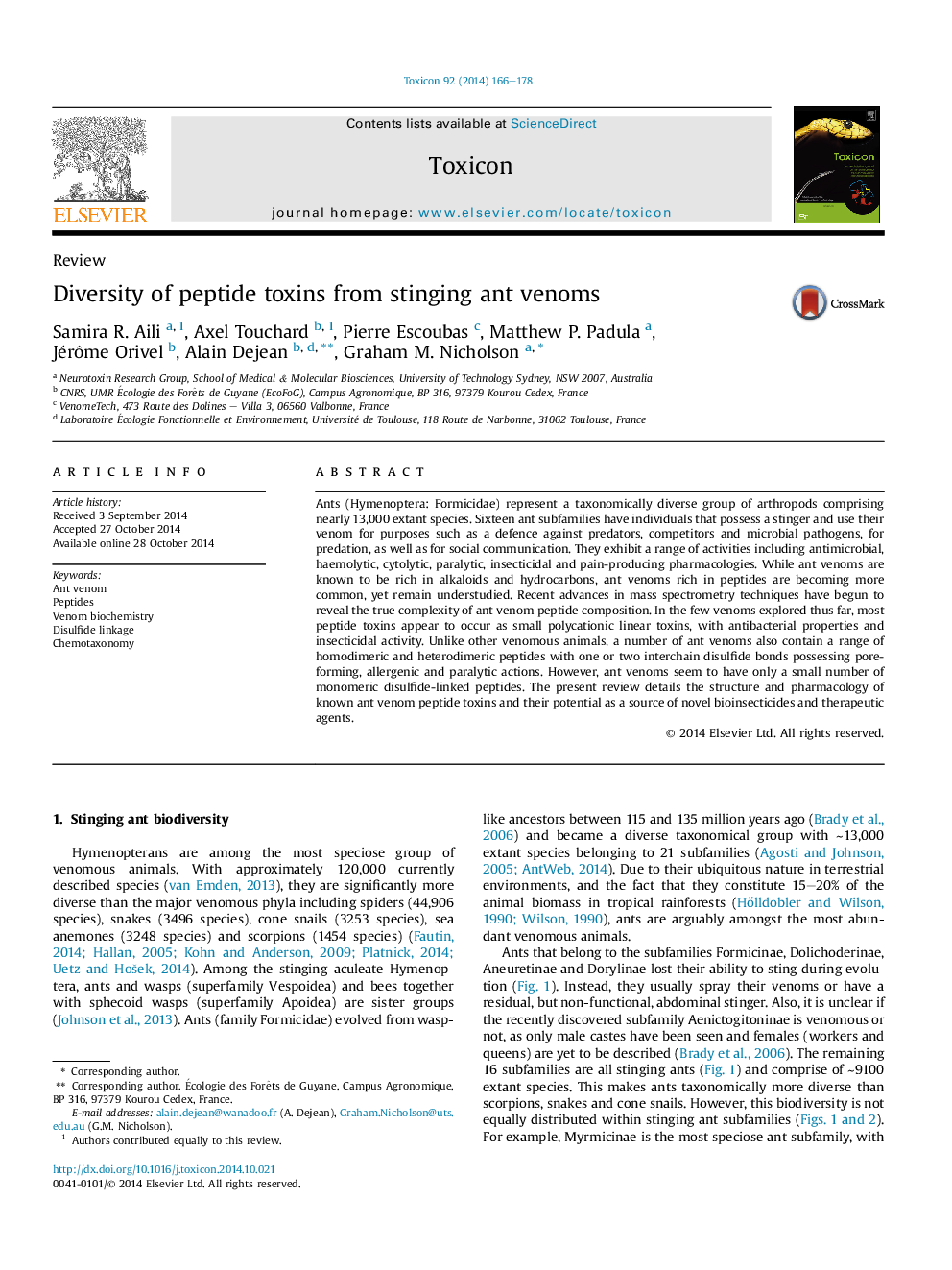| کد مقاله | کد نشریه | سال انتشار | مقاله انگلیسی | نسخه تمام متن |
|---|---|---|---|---|
| 8395891 | 1544143 | 2014 | 13 صفحه PDF | دانلود رایگان |
عنوان انگلیسی مقاله ISI
Diversity of peptide toxins from stinging ant venoms
ترجمه فارسی عنوان
تنوع سموم پپتیدی از زخم های مورچه
دانلود مقاله + سفارش ترجمه
دانلود مقاله ISI انگلیسی
رایگان برای ایرانیان
کلمات کلیدی
سم مورچه، پپتیدها، بیوشیمی زهر، پیوند دی سولفید، شیمی درمانی،
موضوعات مرتبط
علوم زیستی و بیوفناوری
بیوشیمی، ژنتیک و زیست شناسی مولکولی
بیوشیمی، ژنتیک و زیست شناسی مولکولی (عمومی)
چکیده انگلیسی
Ants (Hymenoptera: Formicidae) represent a taxonomically diverse group of arthropods comprising nearly 13,000 extant species. Sixteen ant subfamilies have individuals that possess a stinger and use their venom for purposes such as a defence against predators, competitors and microbial pathogens, for predation, as well as for social communication. They exhibit a range of activities including antimicrobial, haemolytic, cytolytic, paralytic, insecticidal and pain-producing pharmacologies. While ant venoms are known to be rich in alkaloids and hydrocarbons, ant venoms rich in peptides are becoming more common, yet remain understudied. Recent advances in mass spectrometry techniques have begun to reveal the true complexity of ant venom peptide composition. In the few venoms explored thus far, most peptide toxins appear to occur as small polycationic linear toxins, with antibacterial properties and insecticidal activity. Unlike other venomous animals, a number of ant venoms also contain a range of homodimeric and heterodimeric peptides with one or two interchain disulfide bonds possessing pore-forming, allergenic and paralytic actions. However, ant venoms seem to have only a small number of monomeric disulfide-linked peptides. The present review details the structure and pharmacology of known ant venom peptide toxins and their potential as a source of novel bioinsecticides and therapeutic agents.
ناشر
Database: Elsevier - ScienceDirect (ساینس دایرکت)
Journal: Toxicon - Volume 92, 15 December 2014, Pages 166-178
Journal: Toxicon - Volume 92, 15 December 2014, Pages 166-178
نویسندگان
Samira R. Aili, Axel Touchard, Pierre Escoubas, Matthew P. Padula, Jérôme Orivel, Alain Dejean, Graham M. Nicholson,
